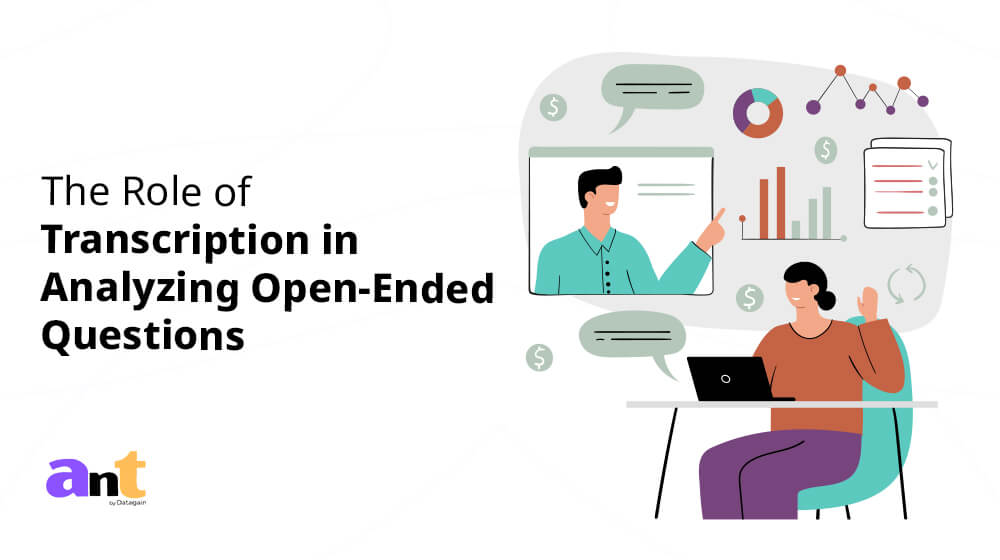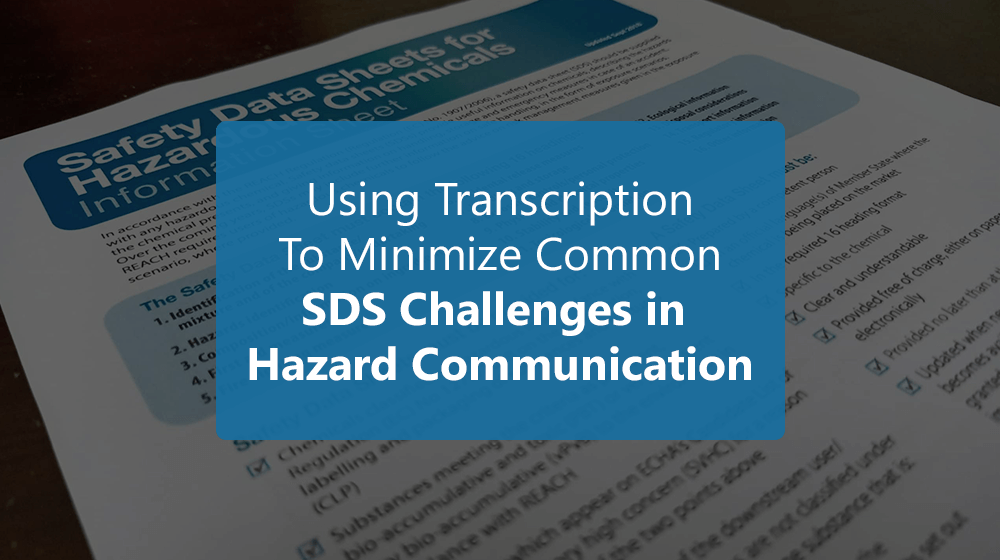Introduction
In the field of qualitative research, open-ended questions are fundamental in eliciting detailed and expansive responses from participants. These questions, by their nature, provide respondents with the freedom to express their thoughts, feelings, and experiences without being confined to predetermined options. However, the richness and depth of data generated by open-ended questions also present challenges in terms of analysis and interpretation. This is where transcription plays a crucial role. By converting spoken words into written text, transcription aids researchers in capturing, analyzing, and making sense of the nuanced responses that open-ended questions elicit. This article delves into the significance of open-ended questions, the process and importance of transcription, and how transcription enhances the analysis of open-ended responses.
Understanding Open-Ended Questions
Open-ended questions are those that do not have a fixed set of answers. Instead of prompting respondents to choose from predefined options, these questions encourage them to provide detailed and elaborative responses. Phrases like “How do you feel about…”, “What do you think about…”, or “Can you describe…” are typical of open-ended questions. These questions are commonly used in interviews, surveys, and focus groups to gather in-depth insights into participants’ perspectives and experiences.
Advantages of Open-Ended Questions
1. Depth of Information: Open-ended questions allow respondents to share their thoughts in detail, providing a richer and more comprehensive understanding of their views.
2. Richness and Nuance: These questions capture the complexities and subtleties of participants’ responses, revealing insights that might be missed with closed-ended questions.
3. Participant Engagement: Respondents often feel more valued and engaged when they have the opportunity to express themselves freely, leading to more thoughtful and genuine answers.
4. Flexibility: Open-ended questions can adapt to various contexts and can explore unexpected themes that arise during the research process.
Disadvantages of Open-Ended Questions
1. Time-Consuming: Collecting and analyzing open-ended responses can be more time-consuming than working with closed-ended questions.
2. Complexity in Analysis: Analyzing qualitative data requires specialized skills and methodologies to accurately identify patterns and themes.
3. Potential for Irrelevant Information: Respondents might provide information that is not directly relevant to the research question, necessitating careful filtering and coding.
4. Subjectivity: The interpretation of open-ended responses can be influenced by the researcher’s biases, making it essential to employ rigorous analytical techniques.
The Importance of Open-Ended Questions
Open-ended questions are indispensable in qualitative research for several reasons:
1. Exploring Complex Issues: These questions are particularly useful for exploring complex issues that cannot be fully understood through fixed-response options. They allow for a deeper investigation into the ‘why’ and ‘how’ behind certain behaviors or opinions.
2. Capturing Diverse Perspectives: Open-ended questions enable researchers to capture a wide range of perspectives, which is particularly important in studies involving diverse populations or exploring new areas of inquiry.
3. Generating New Hypotheses: The responses to open-ended questions can reveal unexpected insights, leading to the generation of new hypotheses and directions for further research.
4. Enhancing Data Validity: By allowing respondents to articulate their thoughts in their own words, open-ended questions can enhance the validity of the data collected, providing a more accurate reflection of participants’ true views.
What is Transcription?
Transcription is the process of converting spoken language into written text. In the context of qualitative research, transcription involves recording interviews, focus group discussions, or other forms of verbal data and then transcribing them verbatim into a text format. This process is essential for several reasons:
1. Data Preservation: Transcription ensures that the data collected during interviews or discussions is preserved accurately for analysis.
2. Ease of Analysis: Written text is easier to analyze than audio recordings, allowing researchers to systematically review and code the data.
3. Accessibility: Transcribed data can be easily shared with other researchers or stakeholders, facilitating collaboration and review.
4. Rigor and Transparency: Transcription provides a transparent and rigorous account of the data collection process, which is crucial for the credibility and reliability of the research findings.
The Role of Transcription in Analyzing Open-Ended Questions
Transcription plays a pivotal role in the analysis of open-ended questions by providing a written record of participants’ responses. This written text serves as the foundation for detailed and systematic analysis. Here are the key steps in analyzing responses to open-ended questions and how transcription facilitates each step:
Data Transcription
The first step in analyzing open-ended questions is to transcribe the responses accurately. This involves listening to audio recordings of interviews or discussions and converting them into written text. High-quality transcription is crucial for ensuring that all the nuances and details of the participants’ responses are captured accurately. Transcription can be done manually by researchers or with the aid of transcription software.
Familiarization
Once the data is transcribed, the next step is familiarization. Researchers read through the transcribed responses multiple times to become thoroughly acquainted with the content. This step is essential for identifying preliminary patterns and themes. Transcription makes it easier to review and re-read the data, allowing researchers to gain a deeper understanding of the participants’ perspectives.
Coding
Coding involves assigning codes to segments of text that represent different themes or concepts. This process can be done manually or with the help of qualitative data analysis software such as NVivo or Atlas.ti. Transcription is crucial for coding because it provides a written record that can be systematically reviewed and annotated. Accurate transcription ensures that the codes assigned to the data are based on a faithful representation of the participants’ responses.
Thematic Analysis
After coding, researchers group similar codes together to form broader themes. This process, known as thematic analysis, involves identifying patterns and connections within the data. Transcription aids thematic analysis by providing a detailed and searchable text format that makes it easier to identify recurring themes and relationships.
Interpreting Findings
Once themes are identified, the next step is to interpret the findings in the context of the research question. This involves linking the themes back to the research objectives and existing literature. Transcription provides a detailed and accurate record of the participants’ responses, which is essential for making valid and reliable interpretations.
Triangulation
To enhance the reliability of the analysis, researchers often use triangulation, which involves cross-verifying the findings with other data sources or researchers. Transcription facilitates triangulation by providing a written record that can be independently reviewed and compared with other data sources.
Practical Tips for Transcribing and Analyzing Open-Ended Questions
To maximize the effectiveness of transcription in analyzing open-ended questions, researchers can follow these practical tips:
Develop a Coding Framework
Before starting the analysis, develop a coding framework that outlines the main themes and sub-themes you expect to find. This framework can be adjusted as you progress through the data. Transcription provides a detailed record that makes it easier to apply and refine the coding framework.
Use Software Tools
Qualitative data analysis software can streamline the coding process, making it easier to manage and analyze large volumes of text data. Transcription is essential for using these tools effectively, as they rely on written text for coding and analysis.
Involve Multiple Coders
If possible, involve multiple coders in the analysis process to minimize bias and enhance the reliability of the findings. Discrepancies between coders can be resolved through discussion and consensus. Transcription provides a written record that allows multiple coders to review and annotate the data independently.
Maintain a Reflective Journal
Keep a reflective journal to document your thoughts, decisions, and any potential biases during the analysis process. This practice can help ensure transparency and rigor in your analysis. Transcription provides a detailed record that can be referenced and reviewed alongside your journal entries.
Conclusion
Open-ended questions are a powerful tool in qualitative research, offering depth and richness that closed-ended questions cannot match. While they present certain challenges, such as time-consuming analysis and potential for subjective interpretation, their benefits in capturing complex and nuanced data make them invaluable. Transcription plays a crucial role in unlocking the full potential of open-ended questions by providing a detailed and accurate record of participants’ responses. By following a systematic approach to transcription and analysis, researchers can gain deeper insights into the phenomena under study.
Incorporating open-ended questions in research not only enhances the quality of the data collected but also fosters a more engaging and participatory experience for respondents. Transcription ensures that this data is preserved and accessible for detailed analysis, making it an indispensable tool in qualitative research. As such, open-ended questions and transcription remain cornerstones of qualitative research, driving meaningful and impactful discoveries. Ant Datagain plays a crucial role in providing transcription services that enhance the analysis of open-ended questions. By offering high-quality transcription services, Ant Datagain ensures that researchers receive accurate and detailed records of their qualitative data.
By adhering to best practices in transcription and analysis, researchers can overcome the challenges associated with open-ended questions and harness their full potential to explore complex issues, capture diverse perspectives, and generate new hypotheses. Ultimately, the combination of open-ended questions and transcription enriches the research process, leading to more nuanced and comprehensive understandings of the human experience.

















